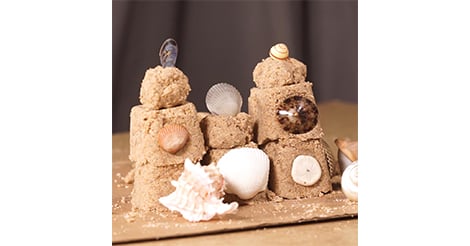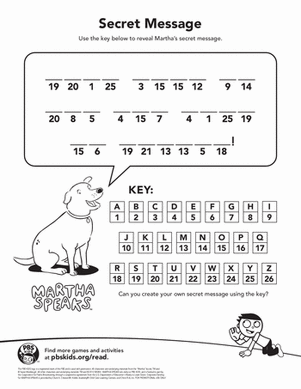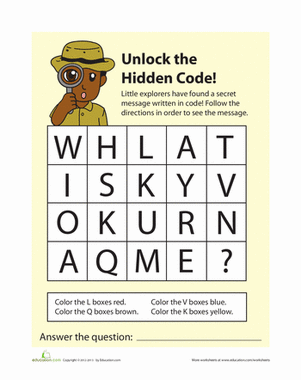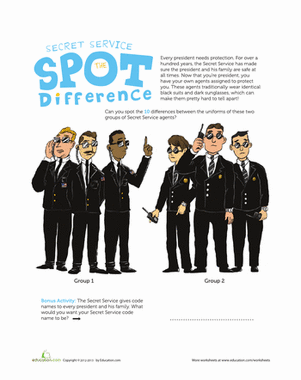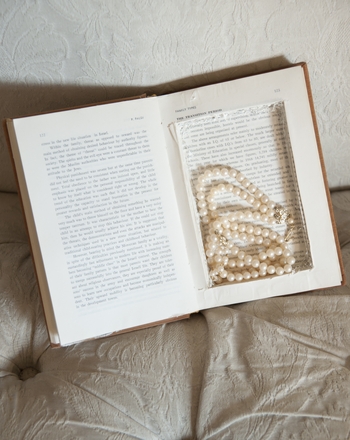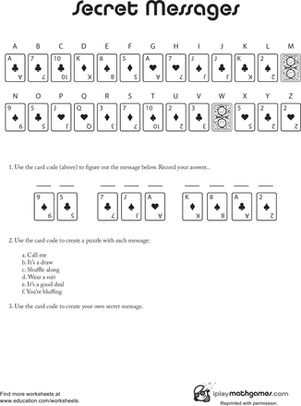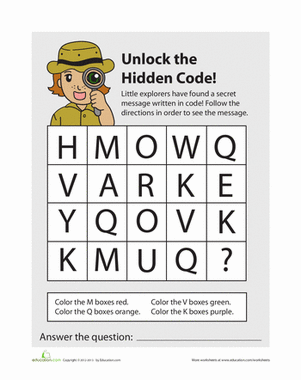Science project
Can You Keep a Secret?
Grade: Fourth Type: Psychology
Objective
To demonstrate how information gets interpreted, and often distorted or changed.
Materials
- Story on a card or piece of paper
- Optional tape recorder to record how the story changes
Introduction
In 1902, William Louis Stern, the person who coined the term intelligence quotient (I.Q.) developed an experiment in which a “chain” of people told and retold a story to study how each person would change that story just a little. By the end of the “chain,” the final story would often have little to do with the original story. Many will use their own ideas and experiences by adding things that weren’t there, or taking out things that were.
For this experiment, a simple story that uses common, identifiable elements is written down and then read to one student. That student then tells the same story to a second student, who then tells it to a third, and so on. (Each time, the pair of students is isolated so that others can’t hear.) The last student then writes the story down. This version is then compared to the original to see how many of the elements changed.
For example, in the sample story there are two girls named Ashley and Carol. After 15-20 students, will their names have changed or been left out? (Note that the name Carol is mentioned twice. Will this increase the chance that the name will be remembered?) Mr. Harver is driving a red car while wearing a dark suit. At the end, he might be wearing a blue suit with a red flower.
Research Questions
- Who was William Stern?
- Which other studies were done along these lines?
- How does this compare to rumors and gossip?
- How would the results differ if done with a larger group?
- How would the results differ if done over a greater period of time?
Terms
- Perception: how we interpret the world around us
- Rumor: a story, usually about another person, that is often only partly true
- Gossip: same as rumor, but often told and shared to “make life interesting”
- Propaganda: purposely leading others to believe specific things
Concepts
There are many reasons why people will modify a story. In retelling, some parts will get left out, other parts added, facts will change, etc. The story will usually get shorter, but sometimes will get longer with new “facts” added.
Experimental Procedure
- Write a short paragraph, preferably one that sounds true. It should have some details but not too many.
- Make a chart of the important facts (names, numbers, colors, etc.), and set this aside, unseen.
- Gather a group of people, such as the students in the classroom.
- With the teacher’s permission, take one student aside and read the paragraph once, unhurried, and without stressing any of the elements.
- Have this student take another aside and repeat (not read) the story.
- Continue through all the students.
- Have the last student write down the story.
- Compare this to the original to see how the story changed.
Example Story
Ashley went to the store with her friend Carol. It was a warm spring day with just a few clouds in the sky. Several squirrels and a rabbit were running around the oak trees looking for something to eat. Carol tossed them some potato chips, a few peanuts and some candy corn. Just then, a red car came down the street. It was being driven by Mr. Harver, who always wore a dark suit with a flower. A cat ran into the street. He turned the car and smashed into a fire hydrant.
Education.com provides the Science Fair Project Ideas for informational purposes only. Education.com does not make any guarantee or representation regarding the Science Fair Project Ideas and is not responsible or liable for any loss or damage, directly or indirectly, caused by your use of such information. By accessing the Science Fair Project Ideas, you waive and renounce any claims against Education.com that arise thereof. In addition, your access to Education.com's website and Science Fair Project Ideas is covered by Education.com's Privacy Policy and site Terms of Use, which include limitations on Education.com's liability.
Warning is hereby given that not all Project Ideas are appropriate for all individuals or in all circumstances. Implementation of any Science Project Idea should be undertaken only in appropriate settings and with appropriate parental or other supervision. Reading and following the safety precautions of all materials used in a project is the sole responsibility of each individual. For further information, consult your state's handbook of Science Safety.

